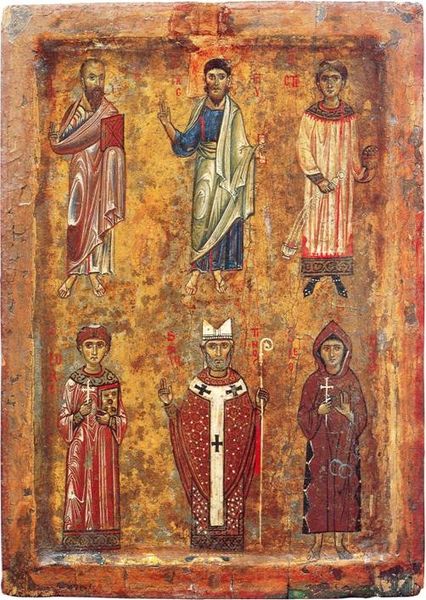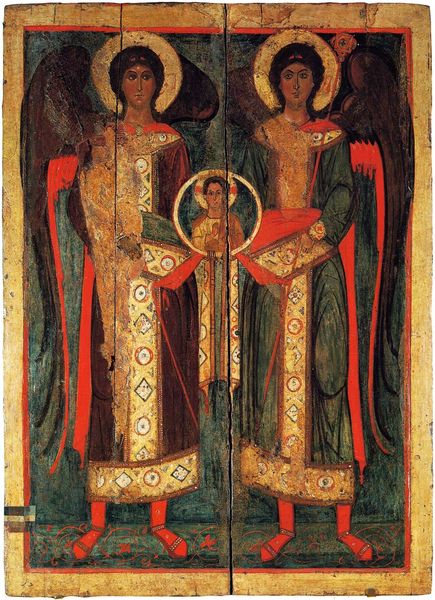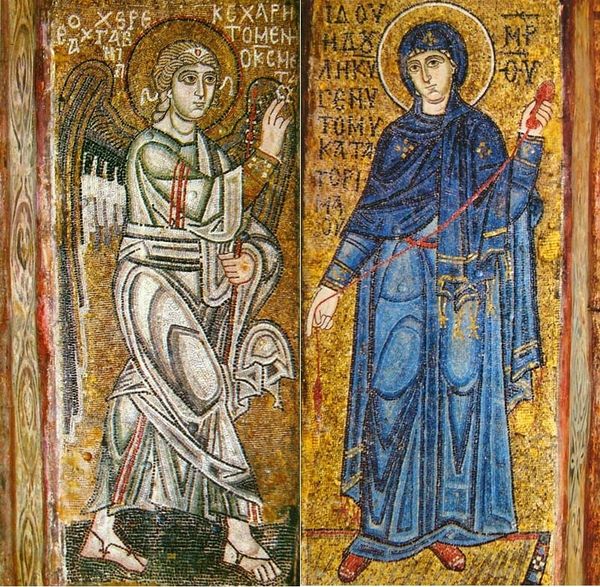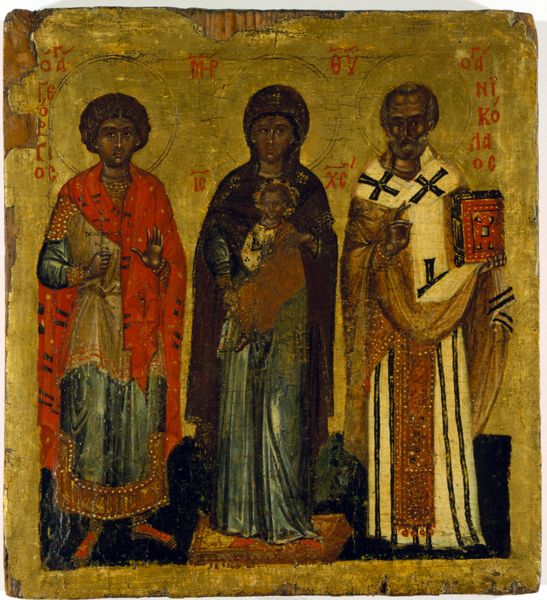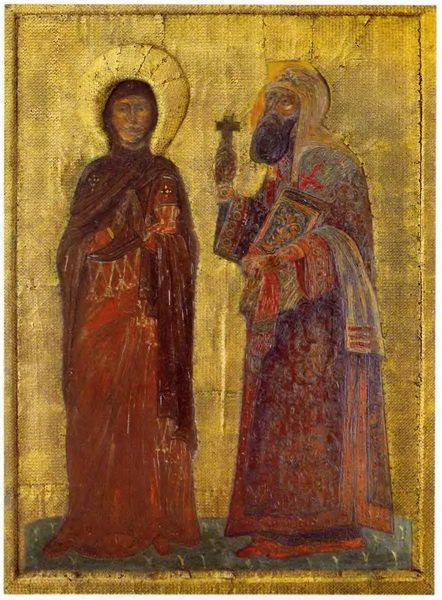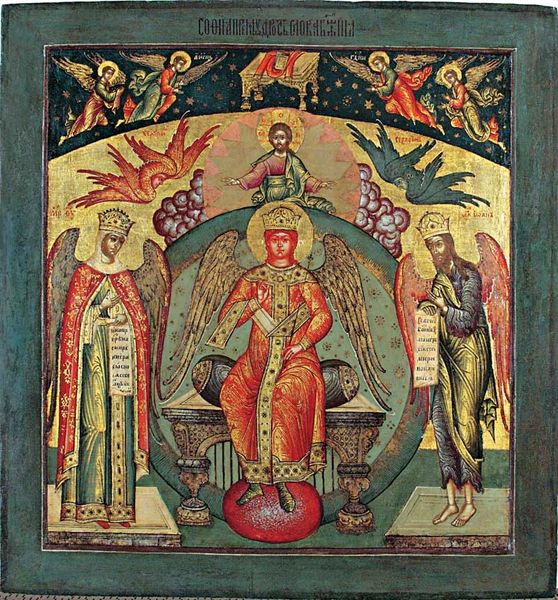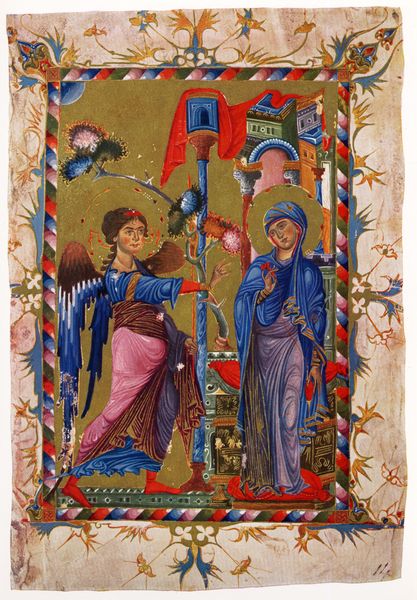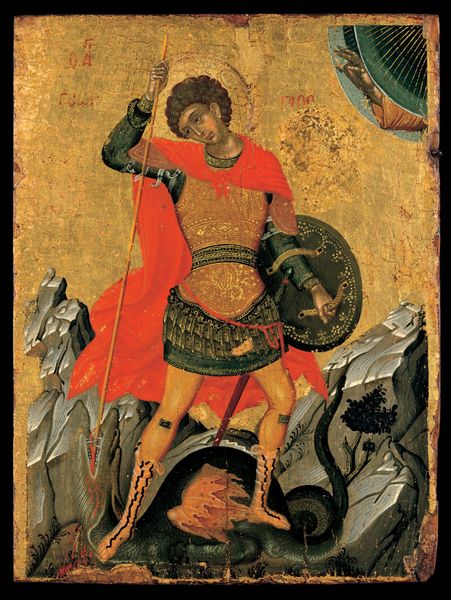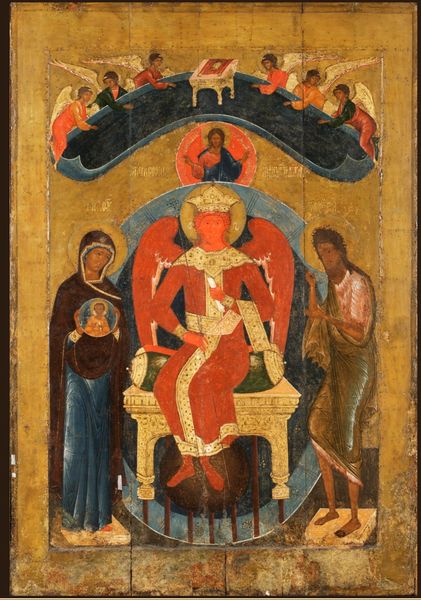
tempera, painting
#
byzantine-art
#
medieval
#
tempera
#
painting
#
folk art
#
figuration
#
mural art
#
folk-art
#
watercolor
Copyright: Orthodox Icons,Fair Use
Editor: So, this is "Sts Stephen and Christopher", a tempera painting dated around 1700. I'm struck by how the artist portrays these figures, particularly St. Christopher with what appears to be a dog's head. What can you tell me about how these kinds of images functioned within their historical context? Curator: It's fascinating, isn't it? That detail of Christopher with a dog's head highlights how iconography served didactic purposes within specific communities. These weren't always universal or "historically accurate" portrayals, but rather reflections of local beliefs and the political dimensions of faith. We have to consider who commissioned this, and where would it be displayed? Was this meant for a public space, for a wealthy patron’s home, or a traveling icon? Editor: That's a good point. So, the appearance of Saint Christopher could be less about historical fact and more about what resonated with the viewers? Curator: Precisely! His canine head often symbolized his barbarian origins. Understanding its impact involves examining how these "barbarian" saints were deployed within narratives of conversion, and potentially even the suppression of pagan practices. What effect do you think his gear, with the spear and shield have? Editor: He looks pretty intimidating, as someone ready to defend. Thinking about it as propaganda of conversion is such a great perspective! I hadn't considered how this image might speak to power and control. Curator: Exactly! And icons like these become powerful cultural artifacts when you start questioning their place in power structures. So what we have left here are really the political, and social functions of these pieces in the art historical narrative. What do you make of the fact that he stands together with the more "traditional" Saint Stephen? Editor: Well, considering Saint Stephen holds what appears to be an incense holder, I’m noticing the connection between them: perhaps illustrating the intersection of new converts with more traditional icons? Curator: Indeed, it showcases how iconography serves as a fascinating record of negotiation between tradition and social change, something deeply shaped by context. It also reflects that how these saints should be shown were constantly up for re-evaluation depending on time and cultural contexts. Editor: Wow, thanks! I’ll never look at another icon the same way.
Comments
No comments
Be the first to comment and join the conversation on the ultimate creative platform.
